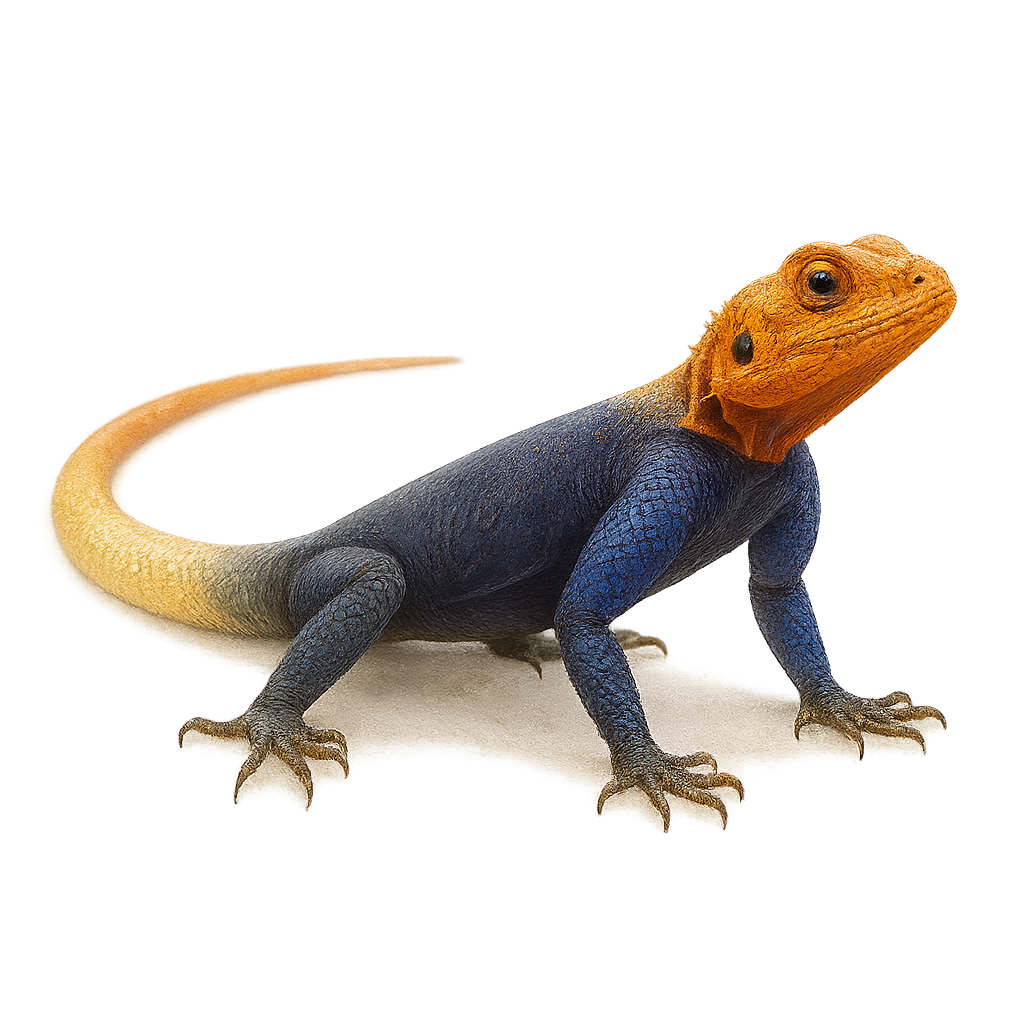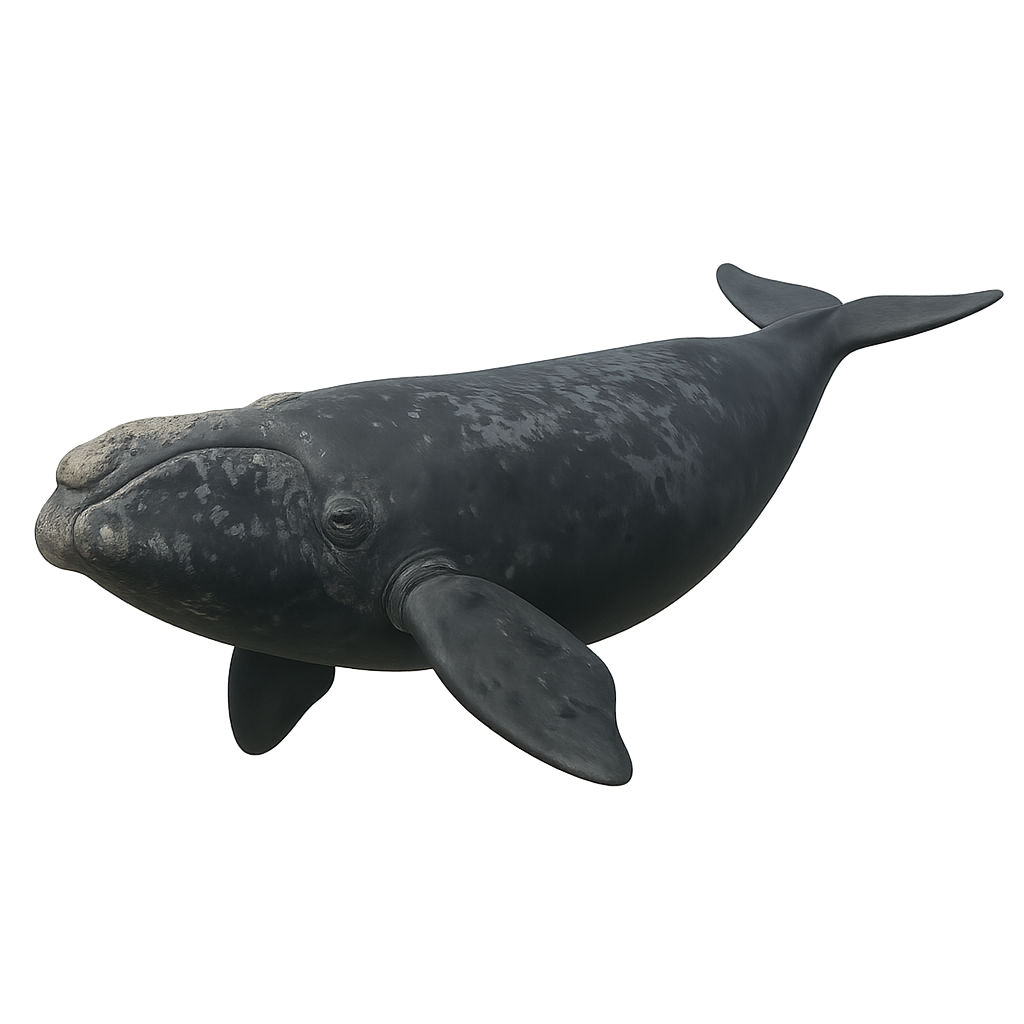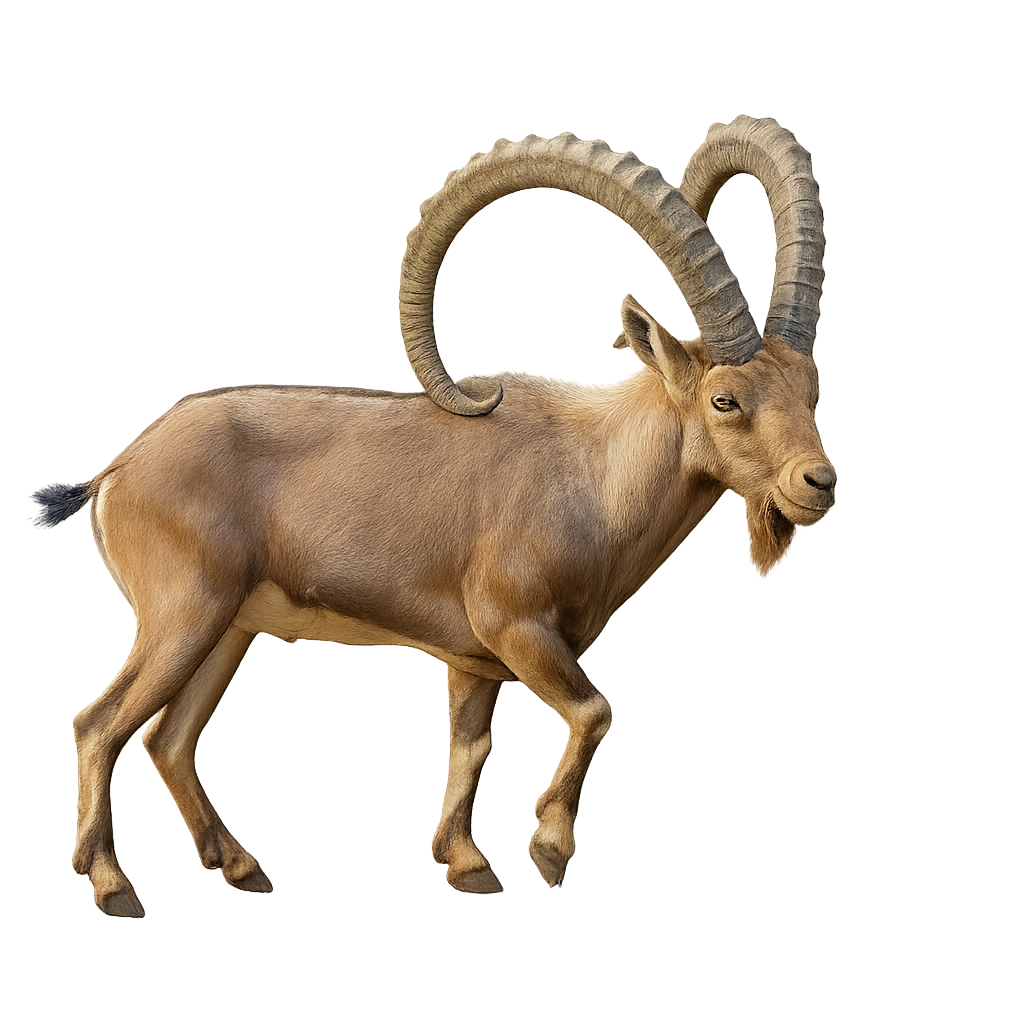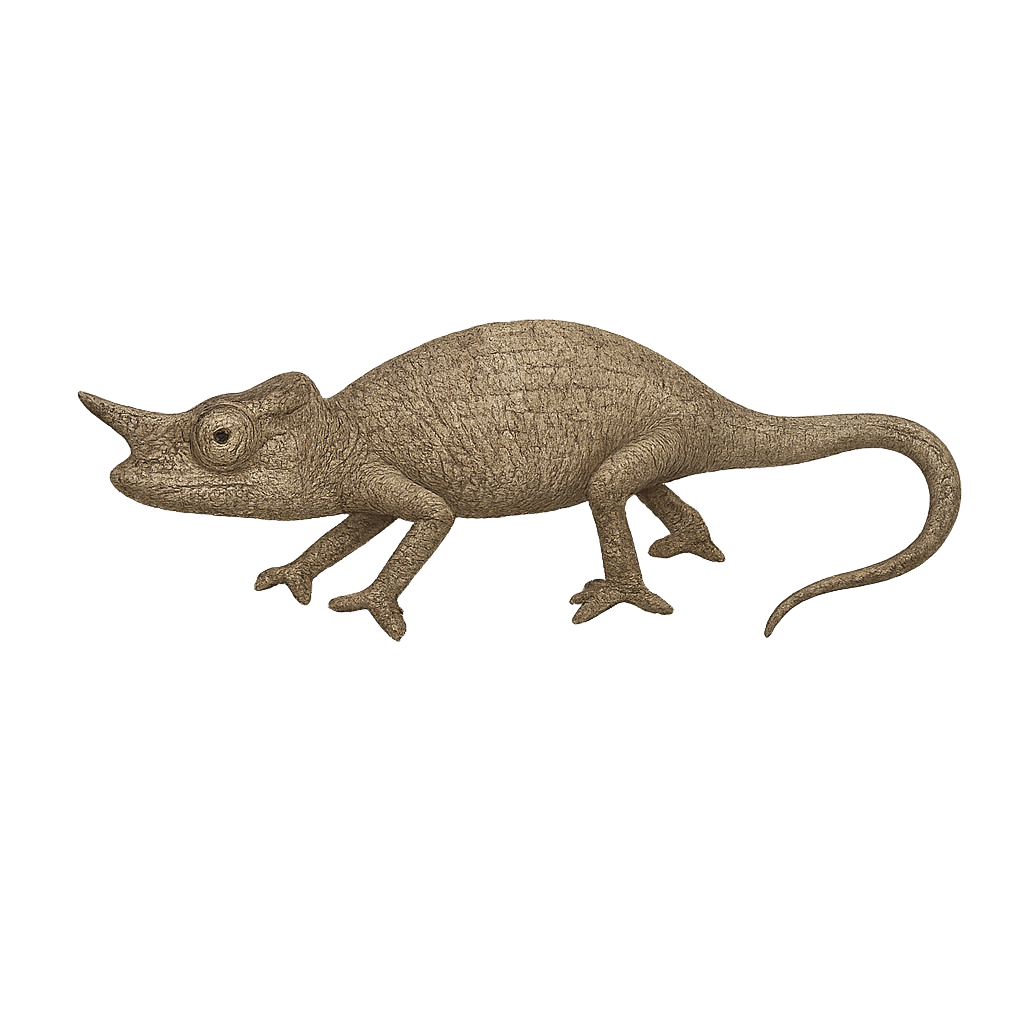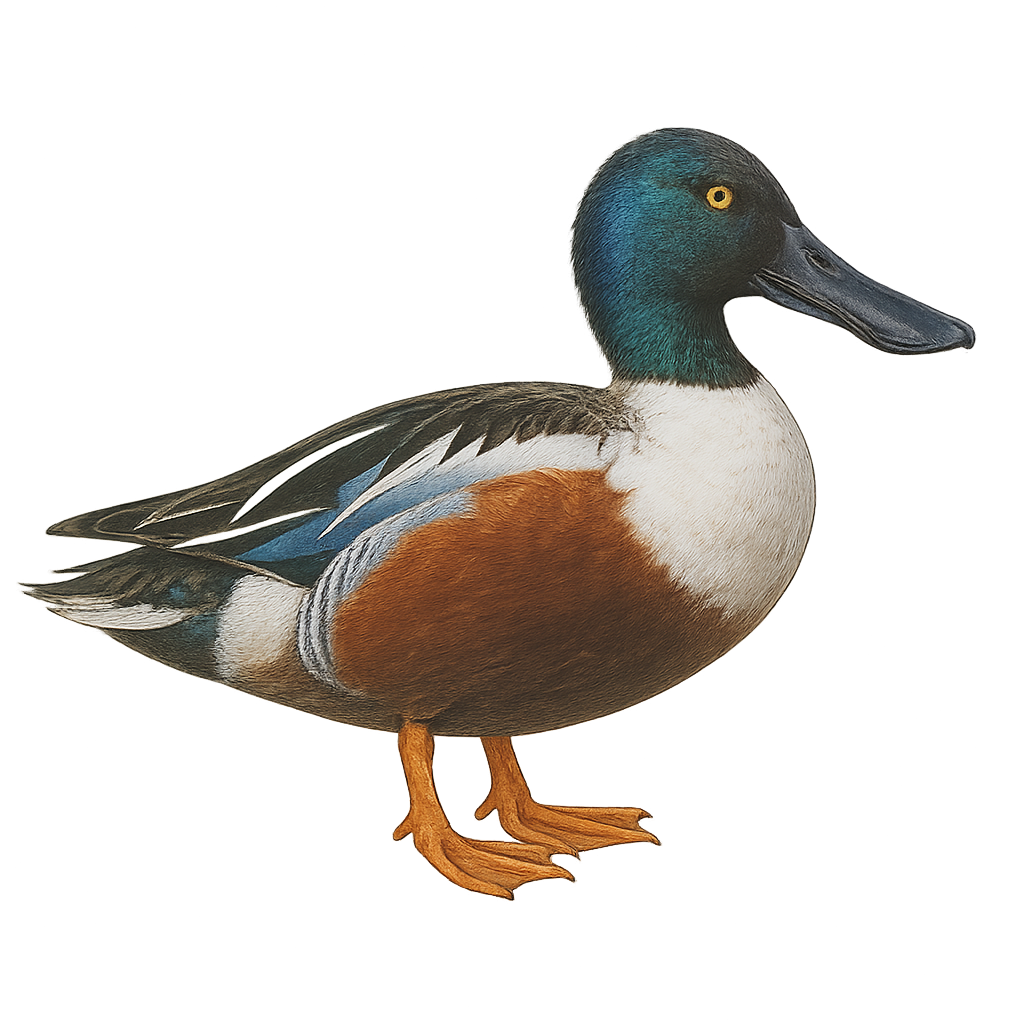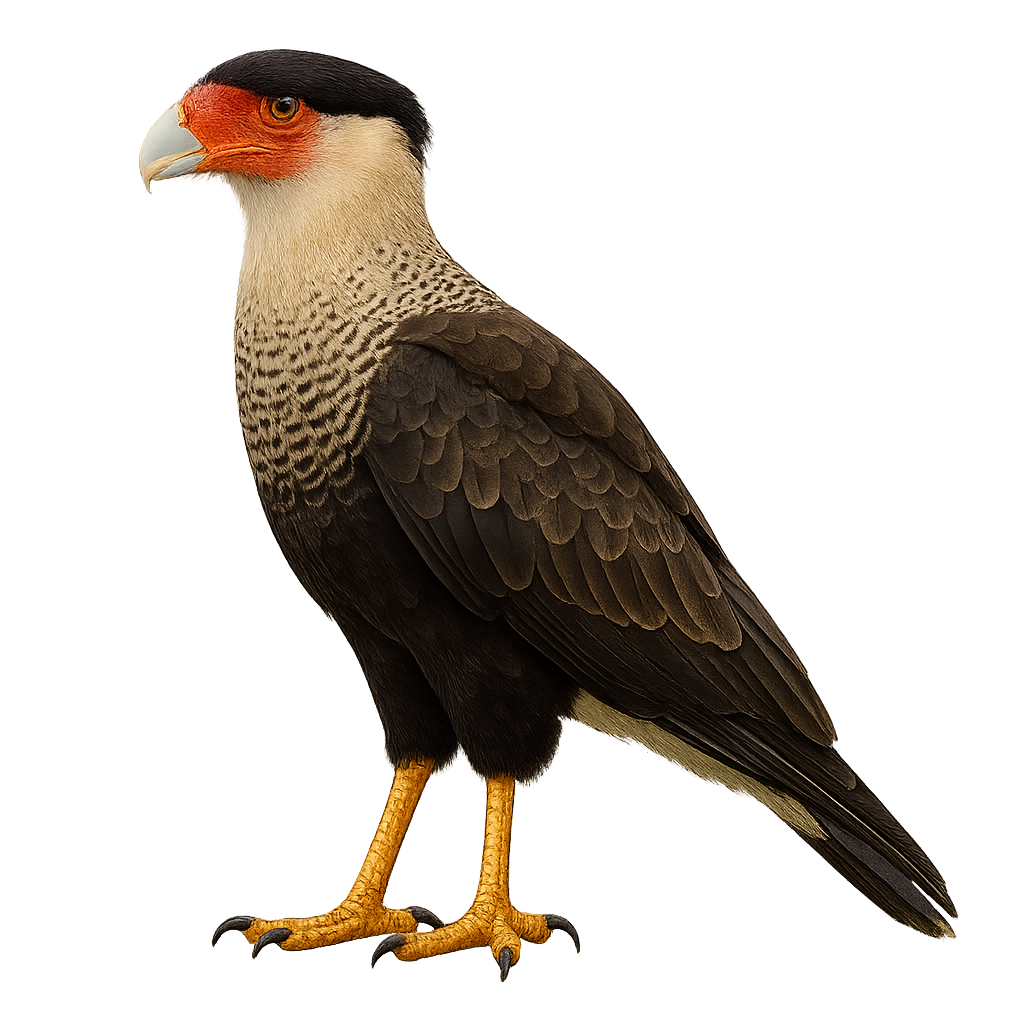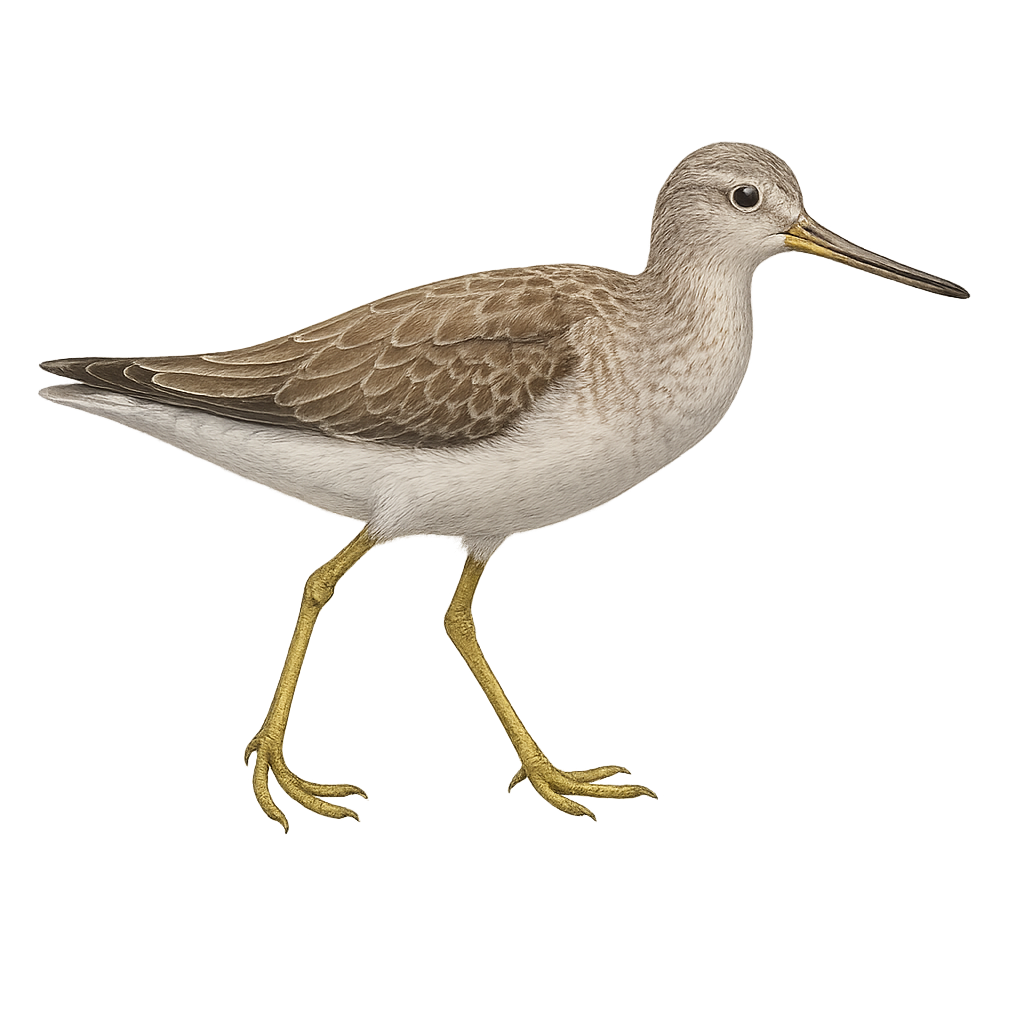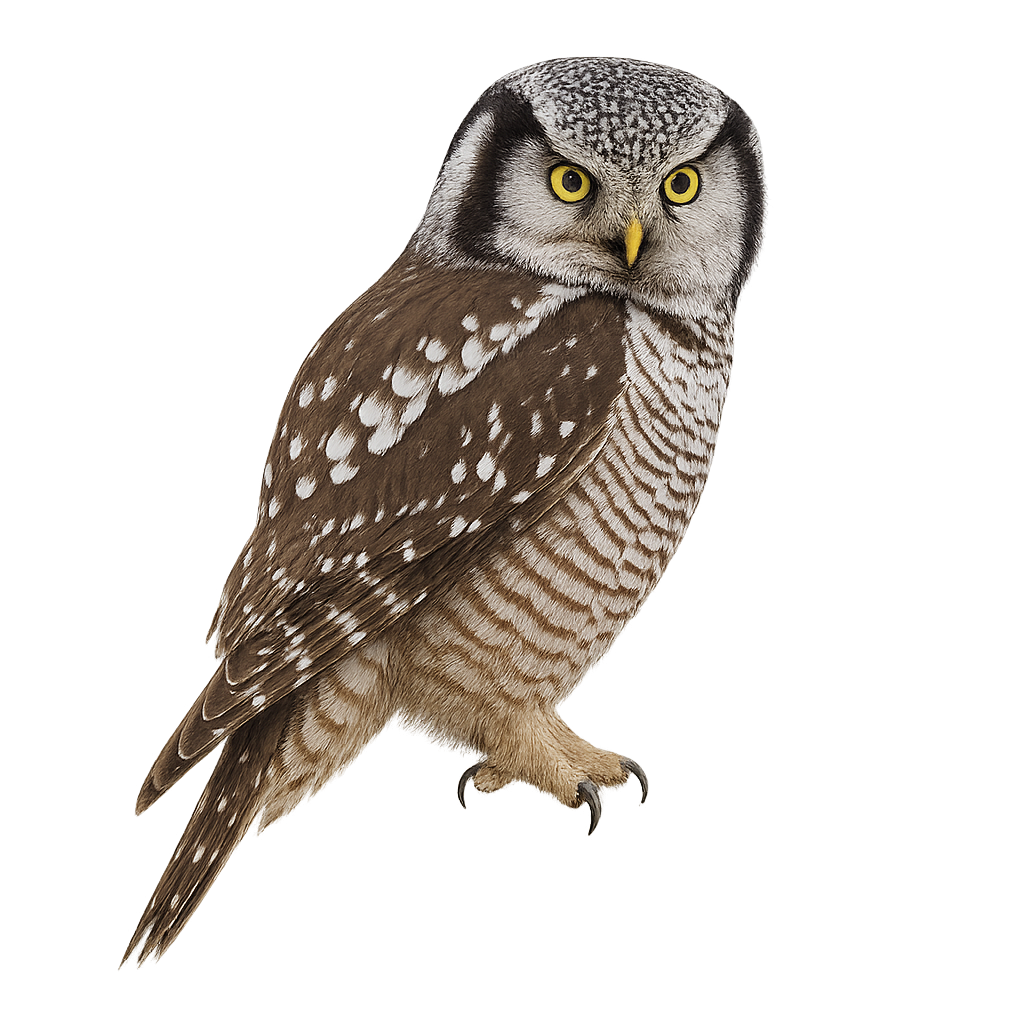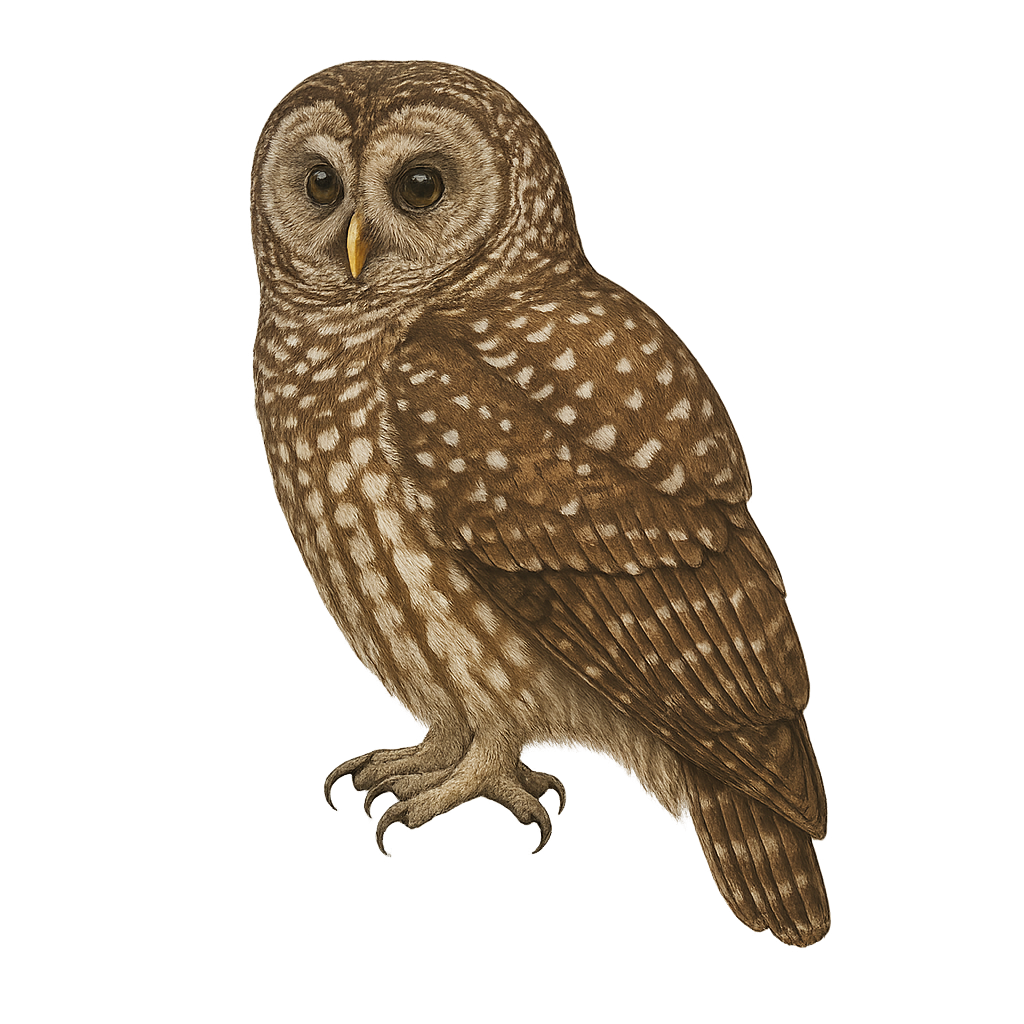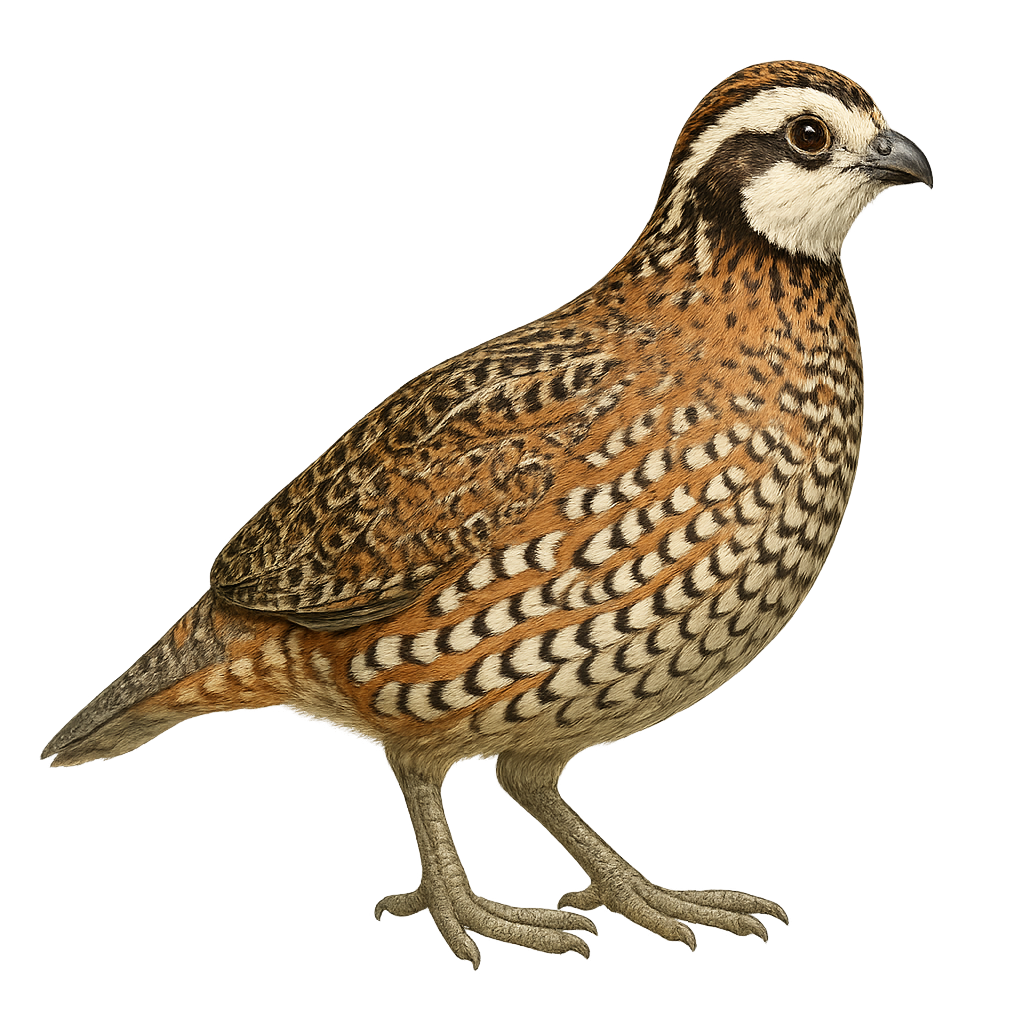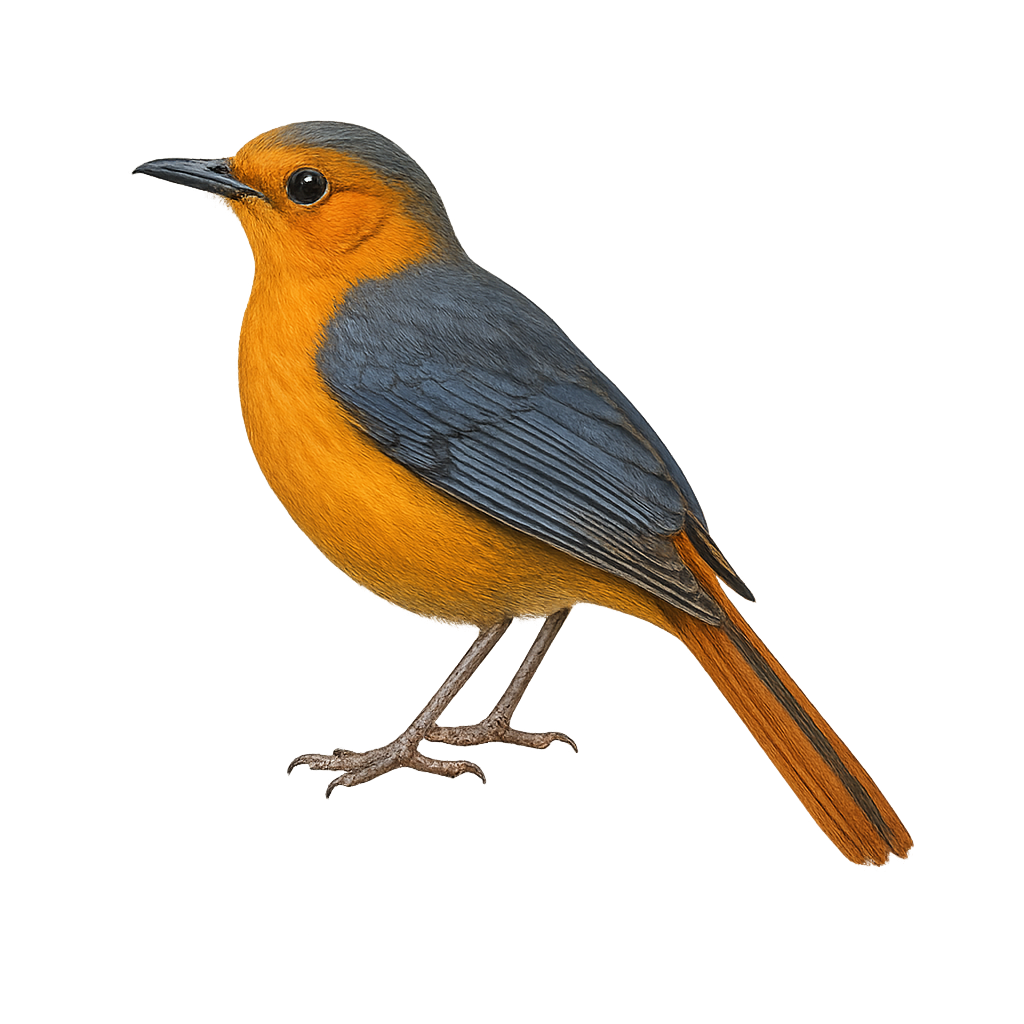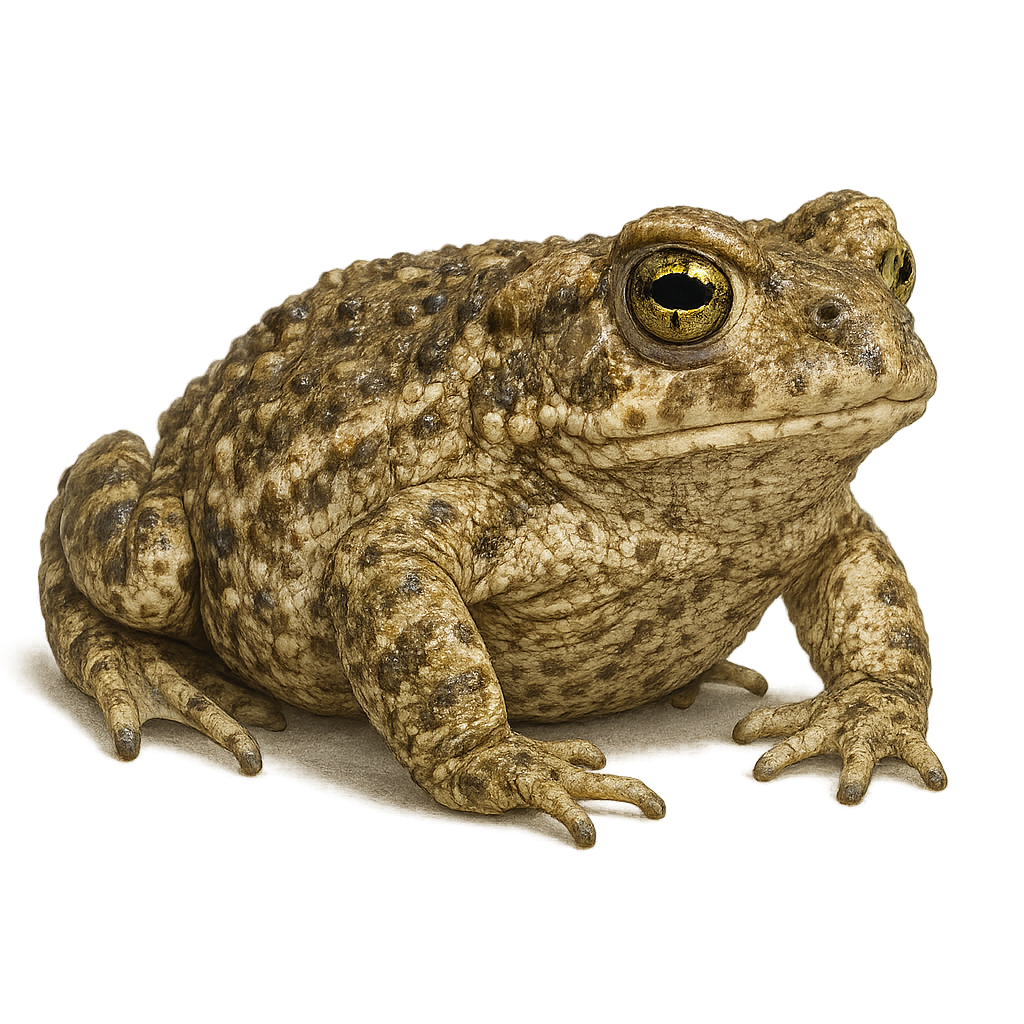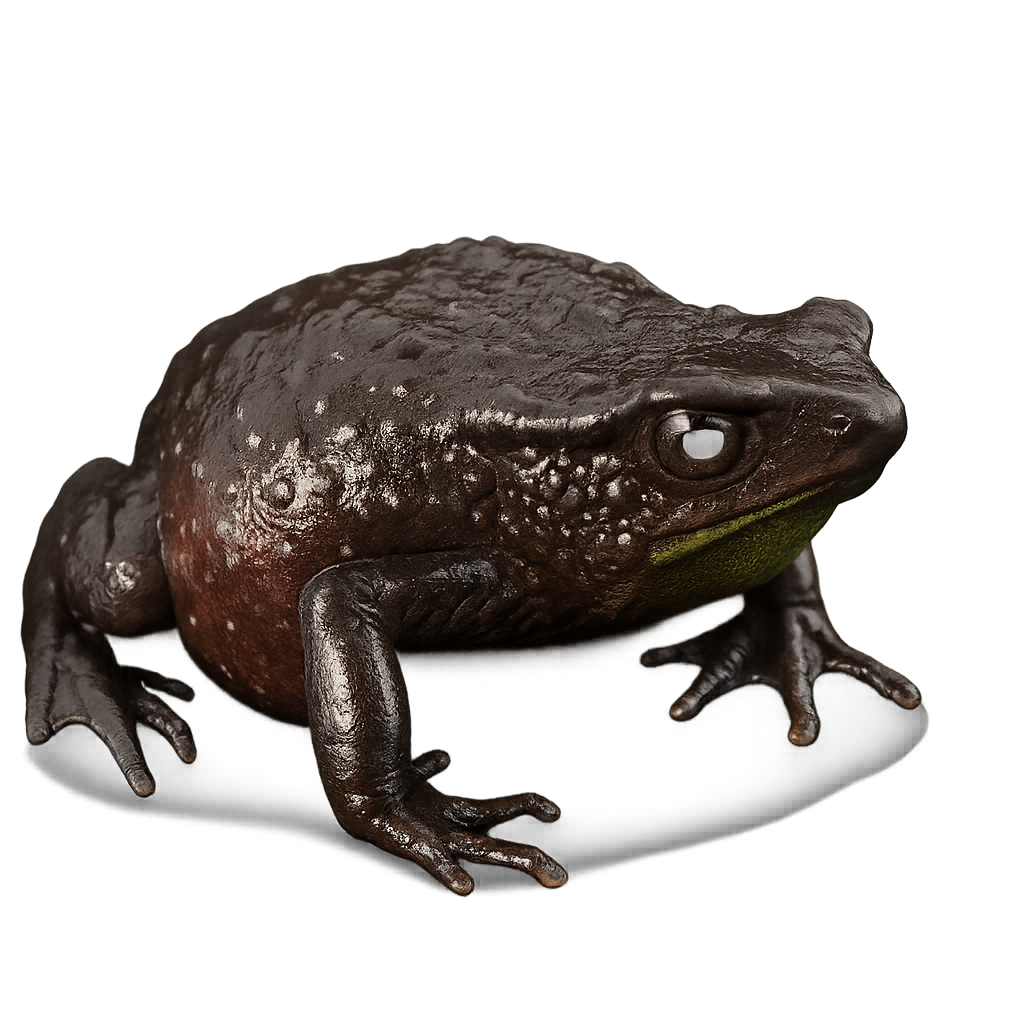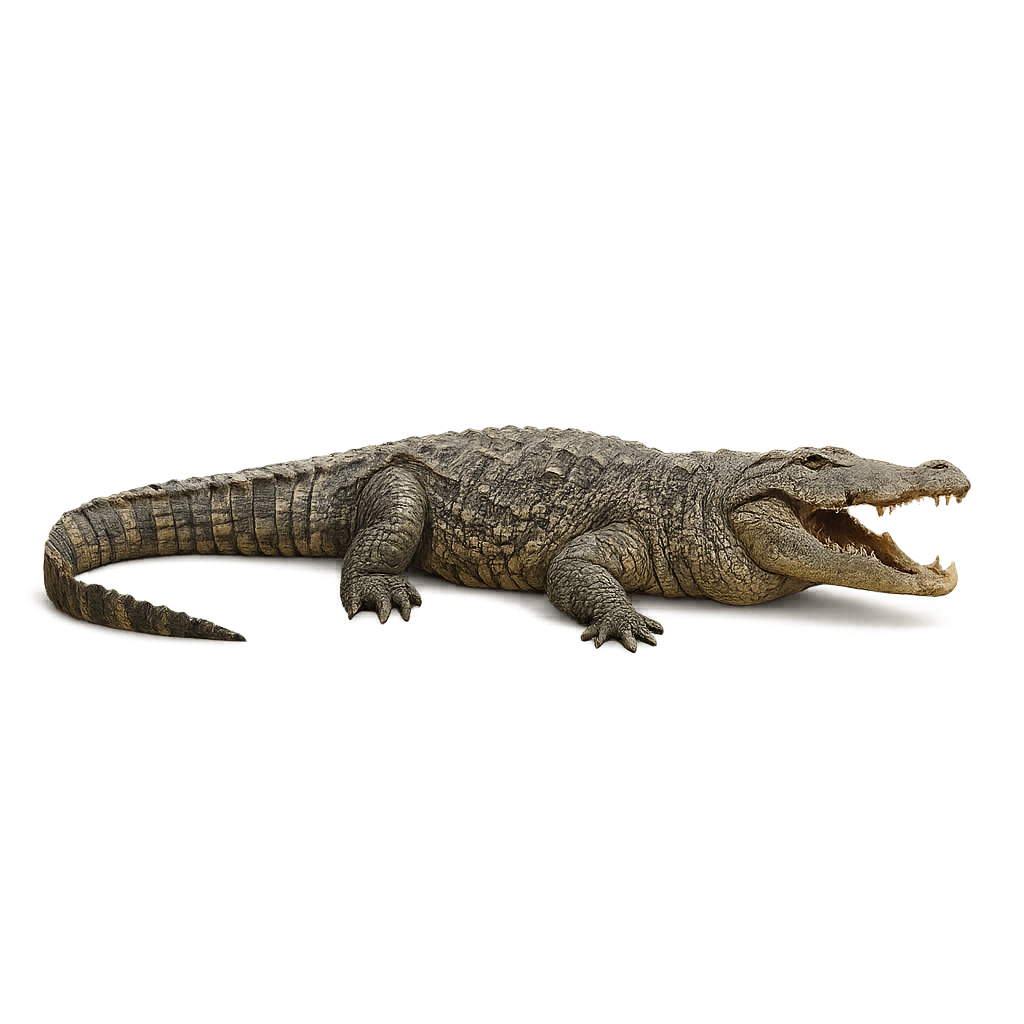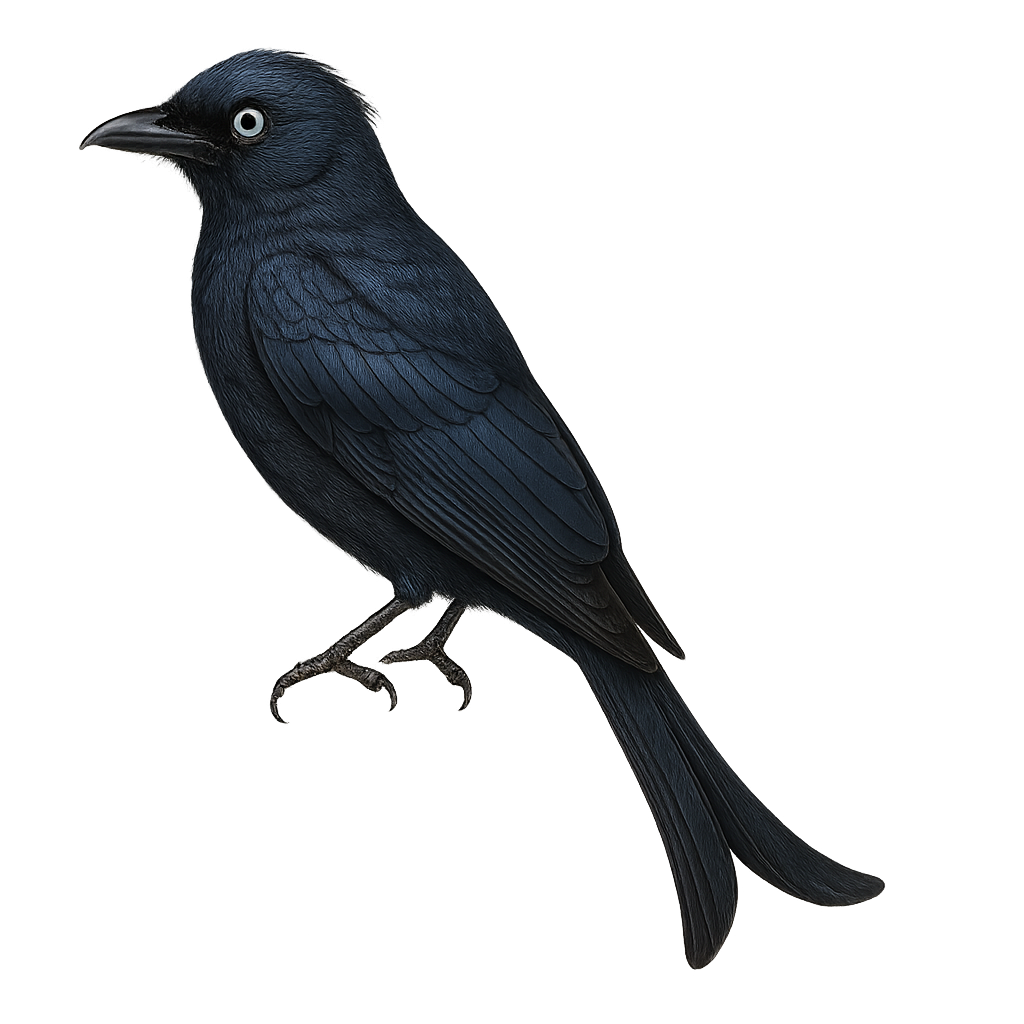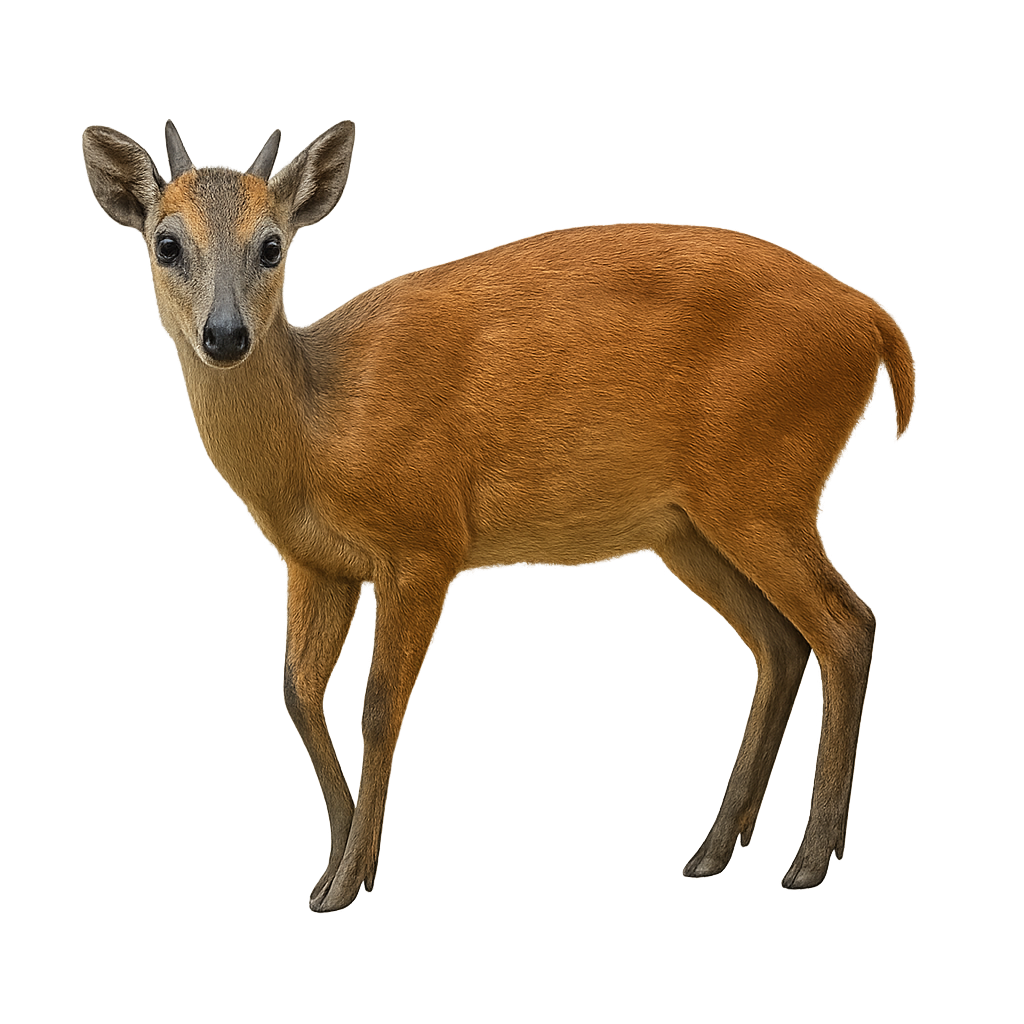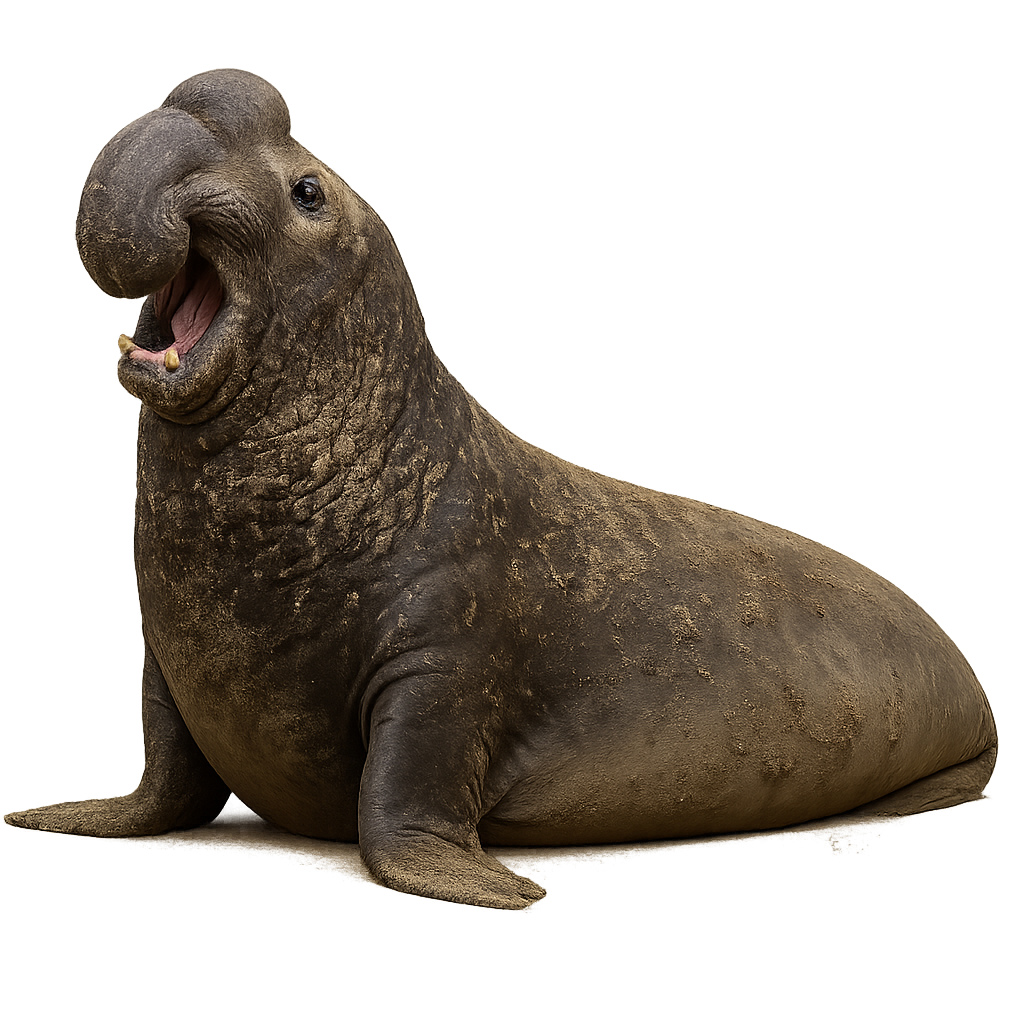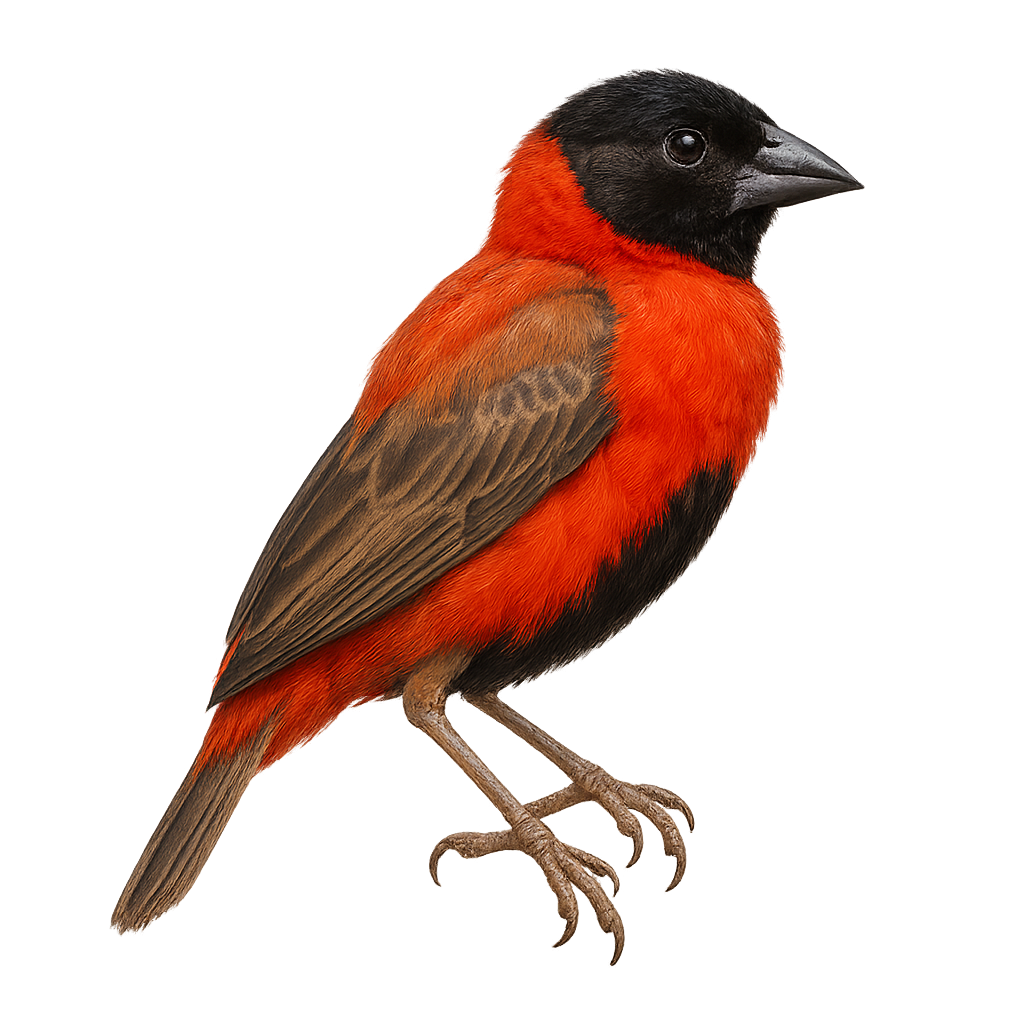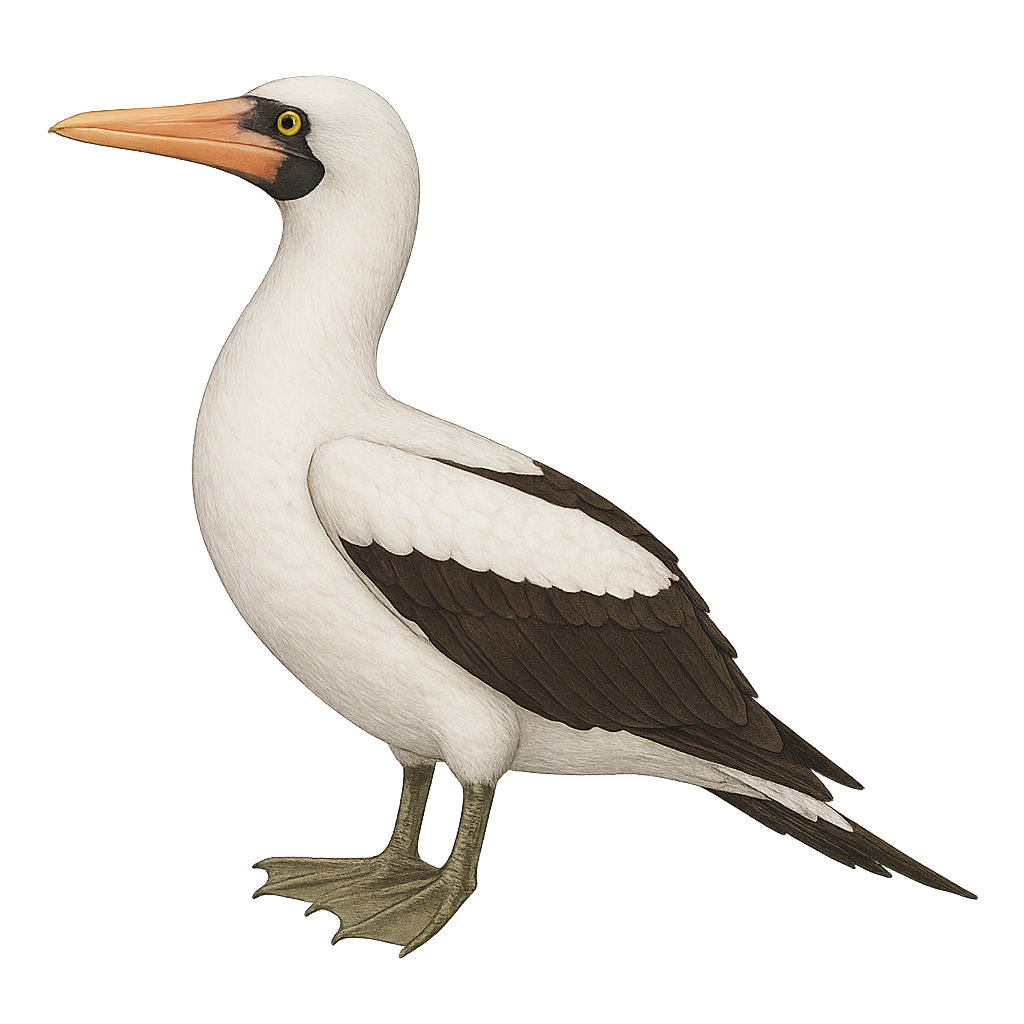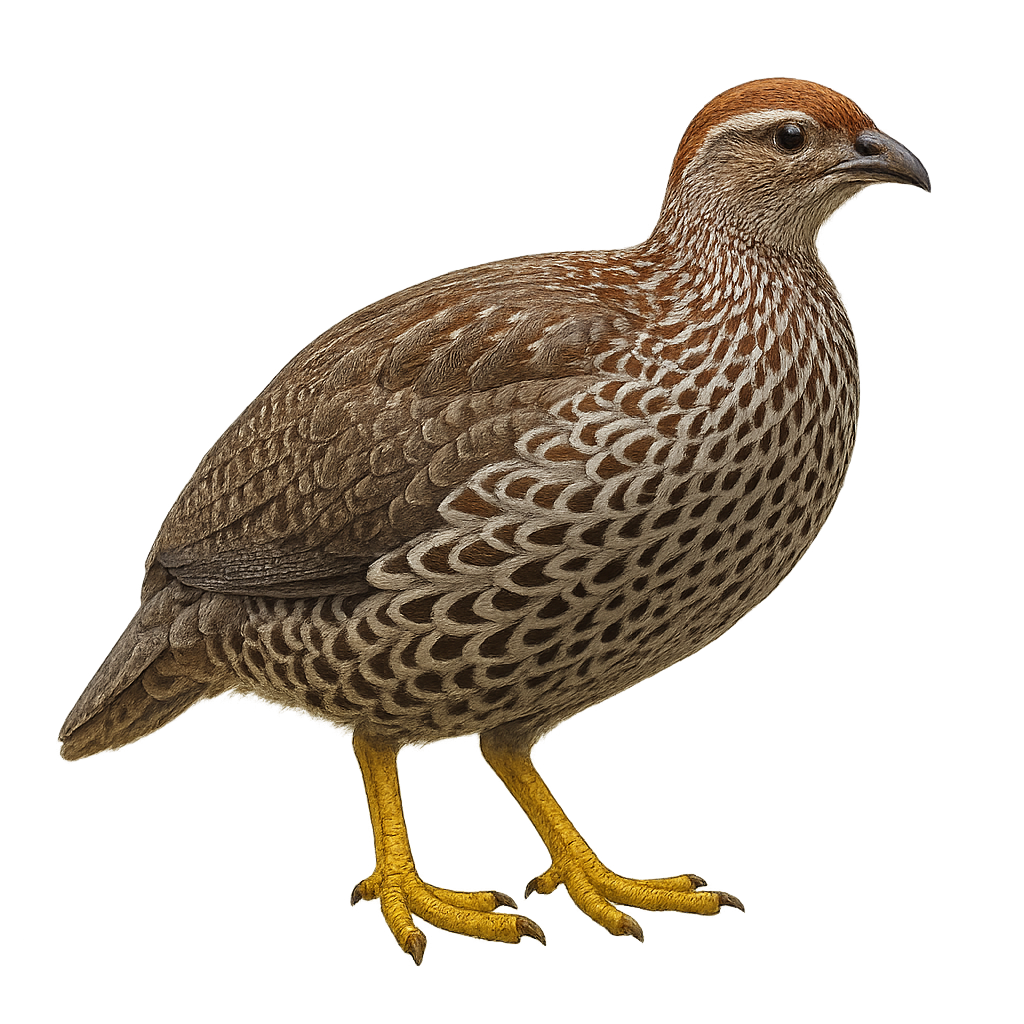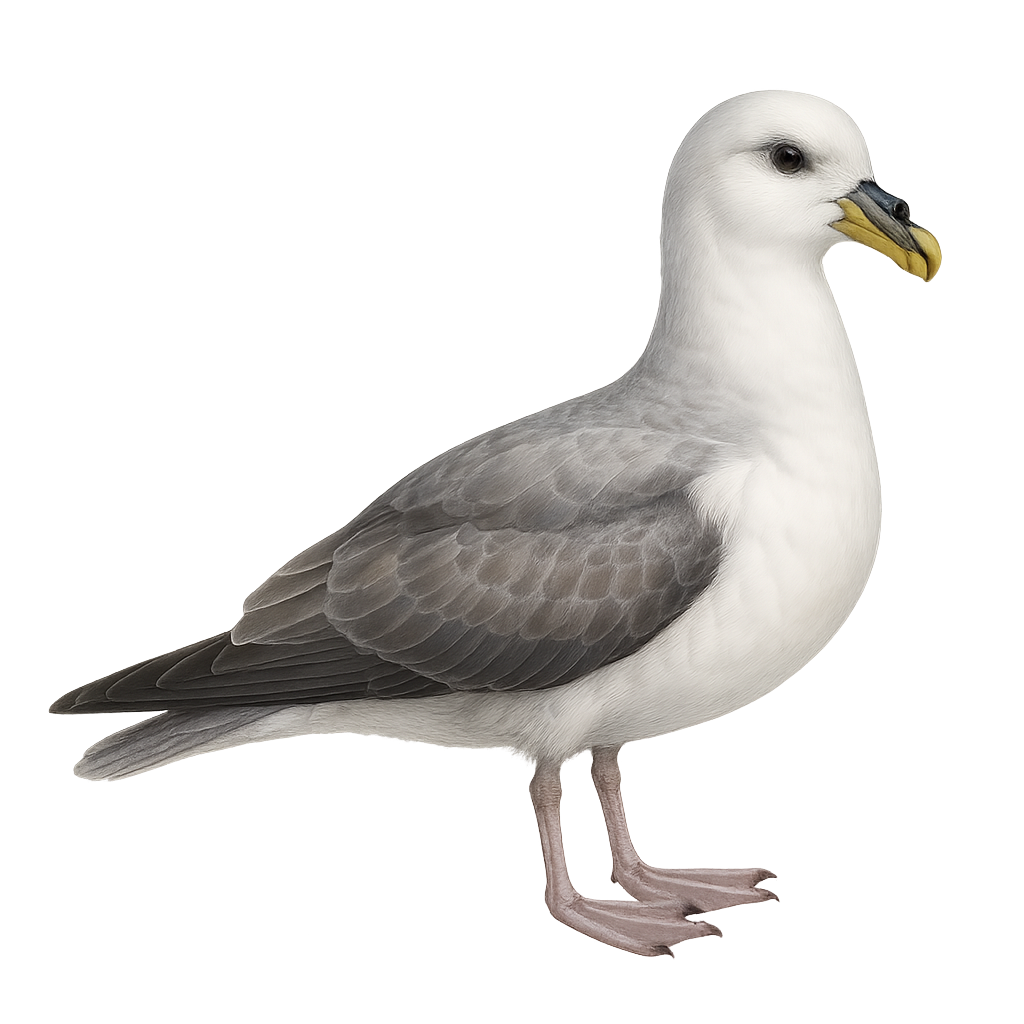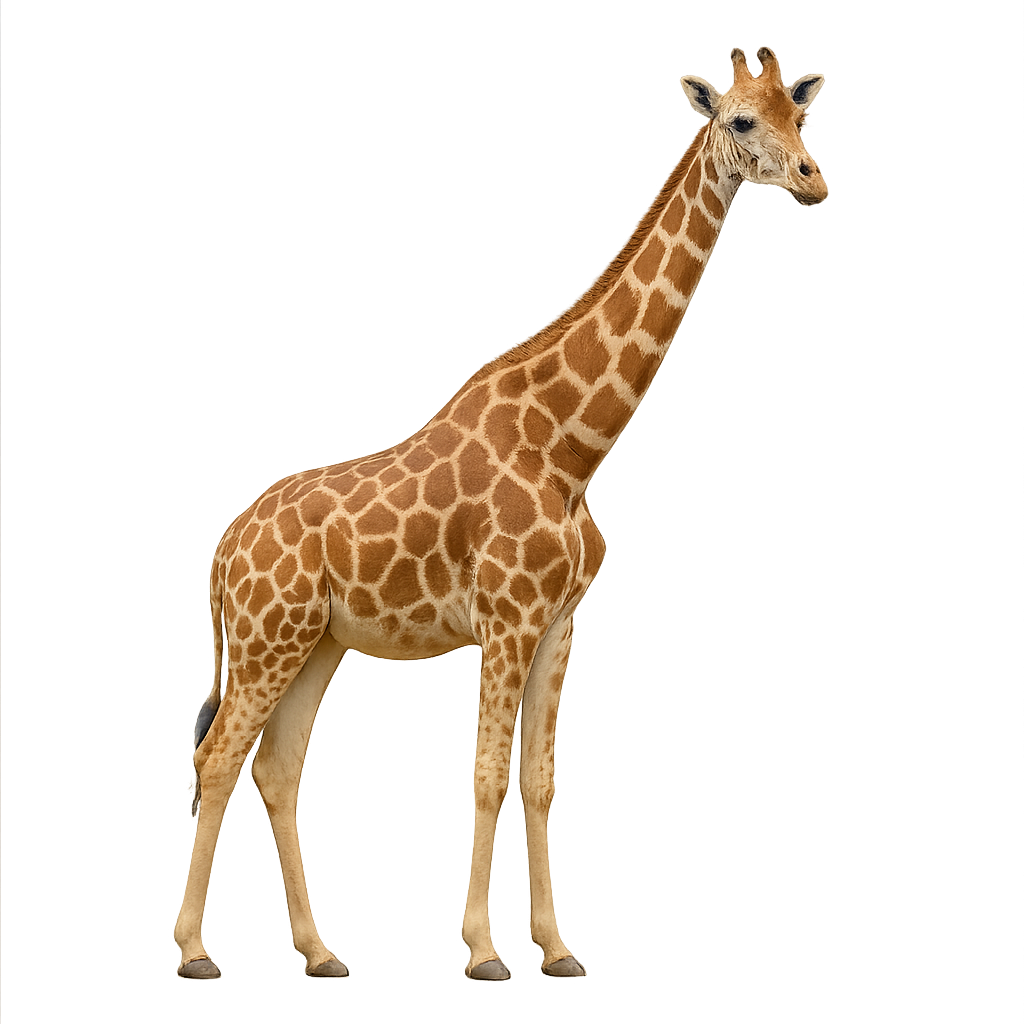The Namibian Rock Agama, or Agama planiceps, is a fascinating lizard found primarily in the arid regions of southern Africa, particularly in Namibia and Botswana. This reptile is easily recognizable by its flattened head and vibrant coloration, especially in males who display bright blue and orange hues during the breeding season. Females and juveniles, on the other hand, exhibit duller colors, usually in shades of brown and gray. The Namibian Rock Agama is a diurnal animal that spends most of its time basking in the sun on rocks or hunting insects. It is well adapted to its dry environment and can survive with very little water, obtaining necessary moisture from its food.
The North Atlantic right whale is a large baleen whale, recognized for its imposing size and rough black skin. This cetacean, once hunted for its oil, is now protected and classified as critically endangered. It primarily lives in the coastal waters of the North Atlantic, from New England to Eastern Canada. Feeding on plankton and krill, it uses its baleen plates to filter food. Due to pollution, underwater noise, and ship collisions, the species remains severely threatened.
The Nubian ibex, scientifically known as Capra nubiana, is a species of wild goat that inhabits the mountainous regions of the Middle East and North Africa. Adapted to arid and rocky environments, this caprid finds refuge and sustenance in these challenging terrains. Males are notable for their long, curved horns, while females have shorter, thinner ones. Their coat is typically light brown, providing camouflage against the rocky backdrop. Nubian ibexes are agile climbers, adept at navigating steep and rugged landscapes. They live in groups, often consisting of females and young, while adult males tend to be more solitary. Their diet mainly includes dry vegetation, grasses, and leaves.
The Nelson's Sparrow, or Ammospiza nelsoni, is a small passerine bird primarily inhabiting the salt marshes and wet meadows of North America. It is recognizable by its distinctive plumage, featuring a gray-blue head, orange cheeks, and black streaks on its back. This sparrow is a migratory bird, breeding in northern regions and wintering along the Atlantic coast. It primarily feeds on seeds and insects, which it finds by foraging in dense vegetation. Although relatively discreet, its melodious song is often heard in spring. The Nelson's Sparrow is a vulnerable species due to the loss of its natural habitat, caused by marsh drainage and coastal development.
The Calumma nasutum, or nose-horned chameleon, is a chameleon species endemic to Madagascar. This small reptile is easily recognizable by its prominent nasal appendage, giving it a unique appearance. It sports a green coloration that allows it to blend into its forest environment. This chameleon is primarily arboreal, inhabiting the island's humid forests. Its ability to change color is used for communication and thermoregulation. The Calumma nasutum is a diurnal animal, active mainly during the day. Its modest size and discreet behavior make it difficult to spot in the wild, making it a fascinating subject for wildlife observers.
The Northern Pintail is a migratory species of duck, easily recognizable by its slender body and long neck, which gives it an elegant and distinctive silhouette. The male during the breeding season has a colorful plumage, with a green head, brown body, and long bill. The female, on the other hand, has more subdued plumage, brown speckled, adapted for camouflage.
This duck primarily inhabits wetland areas, such as marshes, ponds, and rivers, where it feeds on aquatic vegetation, seeds, and insects. The Northern Pintail is a long-distance migrant, leaving its breeding grounds in Europe and Asia to head to Africa or the Middle East during the winter. Although still fairly widespread, the species is threatened by the loss of its natural habitat due to wetland drainage and intensified agriculture.
The Northern Shoveler is a medium-sized dabbling duck, measuring between 44 and 56 cm in length with a wingspan of 70 to 85 cm. The breeding male features an iridescent dark green head, white chest, chestnut flanks, and a large spatula-shaped bill. The female has mottled brown plumage and a similarly shaped bill. This species inhabits shallow wetlands, such as marshes, ponds, and floodplain meadows rich in aquatic vegetation. It feeds by filtering water with its specialized bill, consuming primarily plankton, aquatic insects, crustaceans, mollusks, and seeds. Migratory, the Northern Shoveler breeds in Europe and Asia, wintering in Africa, India, and Southeast Asia. Although listed as Least Concern by the IUCN, it is sensitive to wetland degradation.
The Northern Caracara is an imposing bird of prey, easily recognizable by its distinctive black and white plumage, with a bright orange head and a powerful beak. This raptor, often mistaken for an eagle due to its behavior and size, is an opportunistic scavenger, feeding primarily on animal carcasses, but it can also hunt live prey, such as small mammals and reptiles.
The Northern Caracara primarily inhabits open areas such as savannas, grasslands, and roadside habitats, where it spends its time scouring the ground for food. It is well adapted to life in varied environments, notably in the southern United States, Mexico, Central America, and South America. Although its population is relatively stable, the species is sometimes threatened by habitat destruction and illegal hunting.
The Northern Cardinal, or Cardinalis cardinalis, is a striking bird found in North American gardens, easily recognized by the male's bright red plumage and the female's brownish-red hue. This medium-sized passerine, measuring about 21 to 23 cm in length, features a distinctive crest and a black mask around its beak. It is commonly seen in forests, gardens, and shrublands. Its melodious and varied song is a key aspect of its behavior, used to mark territory and attract mates. The Northern Cardinal is a non-migratory bird, known for its year-round territorial fidelity.
The American Beaver is a large, semi-aquatic rodent famous for its construction skills and its ability to modify its environment. It is easily recognizable by its wide head, large orange incisors, and its flat, scaly tail. The American Beaver primarily lives in rivers, lakes, and wetlands, where it builds dams and lodges using branches, tree trunks, and mud to create safe, stable habitats.
This rodent is an excellent swimmer and spends much of its life in the water, where it feeds mainly on bark, roots, and young tree shoots. The American Beaver plays a crucial role in its ecosystem by altering waterways, creating ponds and wetlands that are beneficial to many other species. However, it is sometimes threatened by habitat loss due to urbanization and water management.
The Nordmann's Greenshank, or Tringa guttifer, is a rare and endangered wader bird belonging to the Scolopacidae family. It is identifiable by its greyish plumage with distinctive white spots on the belly and wings. Its long, slightly curved bill is perfect for probing mudflats for food. This bird migrates over long distances, breeding in the coniferous forests of the Russian Far East and wintering in the wetlands of Southeast Asia. Its population is declining due to habitat loss and hunting. Conservation efforts are crucial for its survival.
The Northern Pygmy Owl, Glaucidium gnoma, is a tiny raptor measuring just 16 to 18 cm, active both during the day and at night. It has a compact body, bright yellow eyes, and a round head with no ear tufts. Found mainly in coniferous and mixed forests of western North America—from Canada to Mexico—it is a fierce hunter despite its size, preying on small birds and rodents, sometimes larger than itself. It often nests in old woodpecker cavities. Though discreet, it is curious and can occasionally be approached quite closely. The species is considered stable, depending on the presence of mature forests. No black or melanistic individuals are known.
The Northern Hawk Owl is a unique nocturnal raptor, easily recognized by its large yellow eyes and its plumage marked with white and gray-brown patterns. It has a slender build with a round head, small size, and broad wings adapted for silent flight. It is primarily found in coniferous forests of northern regions, particularly in wooded areas of North America, Northern Europe, and Russia.
This raptor primarily hunts small mammals, birds, and insects, which it catches with its silent flight skills. The Northern Hawk Owl is also known for its ability to hunt during the day if necessary, especially during the breeding season. It is a relatively discreet bird, often feeding near open areas where it can spot its prey. While its population remains stable in some regions, it is threatened by deforestation and the loss of its natural habitat. It is protected in many areas to preserve its coniferous forests.
The Northern Spotted Owl is a subspecies of the spotted owl, primarily found in the old-growth coniferous forests of the western coast of North America. It is medium-sized, with dark eyes and brown plumage speckled with white. This owl is a nocturnal predator, feeding mainly on small mammals. It is known for its reliance on mature forest habitats, making it vulnerable to deforestation. Due to habitat loss and competition with the barred owl, it is classified as a threatened species. Conservation of its natural habitats is crucial for its survival.
The Northern Bobwhite, or Colinus virginianus, is a medium-sized bird belonging to the Odontophoridae family. It is easily recognizable by its brown speckled plumage and distinctive white-striped head. This bird is primarily terrestrial and prefers open habitats such as grasslands, agricultural fields, and sparse forests. It is known for its characteristic call, a clear and melodious "bob-white," often heard at dusk. The Northern Bobwhite is a social bird, living in groups called "coveys" outside the breeding season. Although widespread in North America, its populations have declined due to habitat loss and intensive agriculture.
The neotropic cormorant is a medium-sized waterbird (65–75 cm) with glossy black plumage accented by bronze tinges on the back and white underparts. It inhabits freshwater bodies and coastal areas, fishing in groups through successive dives to catch fish and crustaceans.
The Natal Robin is a medium-sized songbird known for its vibrant plumage and melodious song. It features a grey head and back, with a bright orange throat and belly. This bird is often seen in dense forests and shaded gardens of southern Africa. It is known for its curious nature and territorial behavior, often spotted hopping on the ground in search of insects and fruits. Although generally solitary, it can sometimes be seen in small family groups. Its ability to adapt to various habitats makes it a common resident within its range.
The Common European Water Snake is a non-venomous snake species, easily recognized by the distinctive black patch that forms a collar around its neck. It is typically olive green to gray in color, with lighter patterns on the belly and small black spots on the back. It can grow up to 1.5 meters in length, although the average size is around 1 meter.
This snake primarily inhabits wetland areas, such as lake shores, marshes, and rivers, where it primarily hunts fish, amphibians, and small reptiles. It is a very good swimmer and spends much of its time in the water, using its diving skills to capture prey. While it is fairly common, it may be threatened by the destruction of its natural habitats, pollution, and illegal collection. The Common European Water Snake is protected in several regions of its range.
The natterjack toad, Epidalea calamita, is a medium-sized amphibian known for its warty skin and distinctive yellow dorsal stripe. It primarily inhabits sandy areas and heathlands in Western Europe. This toad is well adapted to dry environments and can travel long distances in search of water for breeding. Its call, a continuous trill, is often heard in spring. It feeds mainly on insects and other small invertebrates. Although its population is stable, it faces threats from habitat loss and pollution.
The Nanay Harlequin Toad, or Atelopus nanay, is a species of toad belonging to the Bufonidae family. Native to the humid tropical forests of Ecuador, this toad is known for its bright colors and smooth skin. It is often found near mountain streams and rivers, where it breeds. Unfortunately, this species is critically endangered due to habitat loss and chytridiomycosis, a fungal disease affecting amphibians. Conservation efforts are crucial to ensure its survival.
The Nile Crocodile is one of the most formidable and largest species of crocodiles, capable of reaching up to 5 meters in length. It primarily lives in rivers, lakes, and swamps in Africa and is an opportunistic predator, mainly hunting fish, birds, and mammals that approach the shores. This crocodile is also known for its territorial behavior, with males often dominating large aquatic areas. Its powerful body and rough skin allow it to blend into its environment, facilitating its stealthy hunting strategy. While primarily aquatic, the Nile Crocodile sometimes ventures onto land to bask in the sun.
The Nicobar Drongo, scientifically known as Dicrurus fuscipennis, is a medium-sized bird endemic to the Nicobar Islands in the Indian Ocean. It is characterized by its glossy black plumage and long forked tail. This bird primarily inhabits the tropical rainforests of these islands, where it feeds on insects and small invertebrates. The Nicobar Drongo is known for its territorial behavior and its ability to mimic the sounds of other birds, which helps it deceive predators and protect its territory. Although its habitat is limited, it is not currently considered threatened, but deforestation could pose a long-term risk.
The Cephalophus natalensis, or Natal Red Duiker, is a small African antelope that primarily inhabits dense forests and wooded areas in eastern South Africa. It is distinguished by its reddish coat, slender legs, and short, straight horns. This discreet mammal stands about 40 to 50 cm at the shoulder and weighs between 12 and 14 kg. It is mainly active at dawn and dusk, feeding on leaves, fruits, and flowers. The Natal Red Duiker is known for its shy nature and ability to blend into its environment to escape predators. Its population is stable, although deforestation poses a potential threat.
The northern elephant seal is a large marine pinniped, with adult males measuring 3–4 m in length and weighing 1800–2500 kg, and females reaching 2–2.5 m for 400–900 kg. It inhabits sandy beaches and coastal islands of the North Pacific, alternating long foraging trips at sea feeding on squid and fish with land phases at breeding sites. During the breeding season (December to January), males establish harems, produce deep bellows and engage in spectacular fights for female access, while females dig shallow nests and give birth to a single pup.
The Northern Red Bishop is a small African bird with striking plumage, especially during the breeding season. Males display bright red feathers with black wings and tail, while females and non-breeding males have duller, brownish tones. These birds inhabit savannas, marshes, and wet grasslands in sub-Saharan Africa. They are known for their social behavior and spectacular courtship displays, where males puff up their feathers to attract females. Their diet mainly consists of seeds, but they also consume insects. Although they are widespread, their habitat is threatened by deforestation and agricultural expansion.
The Northern Gannet is a large seabird, easily recognized by its brilliant white plumage and large black-tipped wings. It measures about 85 cm in length, with a wingspan of 170 to 180 cm, and weighs between 2.5 and 3.5 kg. Its long, pointed beak, along with its pale yellowish head, makes it a formidable predator in its marine environment. The Northern Gannet primarily inhabits the rocky coasts of the North Atlantic, where it nests in impressive colonies, often situated on steep cliffs. This bird is an excellent diver, catching its prey by plunging dramatically from heights of up to 30 meters, reaching speeds in excess of 100 km/h. Its diet mainly consists of fish, which it catches either in flight or by diving underwater. While the species is not endangered, it faces risks such as marine pollution, declining fish populations, and disturbances to its nesting sites.
The Nazca Booby is a striking seabird native to the Galápagos Islands, recognized for its bright white plumage contrasted by black wings and tail. It has a sturdy, pointed bill, often yellowish, ideal for catching fish and squid by diving skillfully into the ocean. This bird nests in dense colonies on cliffs and rocky islets, creating rudimentary nests on the ground. Pairs are monogamous and share parental duties, typically incubating two eggs. The chicks, covered in white down, rely on adults for food until they are ready to fledge.
The Nahan's Francolin, or Francolinus nahani, is a shy and elusive bird native to the dense tropical forests of Central Africa, particularly in the Democratic Republic of the Congo and Uganda. It is characterized by its speckled brown plumage, reddish head, and black bill. Preferring dense undergrowth, it feeds mainly on seeds, insects, and small invertebrates. Although its behavior is not well-documented, it is generally considered shy and difficult to spot. Its population is declining due to deforestation and hunting, making it vulnerable. Conservation efforts are essential to ensure its long-term survival.
The Northern Fulmar, or Fulmarus glacialis, is a robust seabird often mistaken for a gull due to its grey and white plumage. However, it is stockier with a short, hooked bill. This bird is primarily found in Arctic and subarctic regions, nesting on coastal cliffs. Known for its graceful gliding flight, it can cover long distances at sea. The Northern Fulmar feeds mainly on fish, crustaceans, and marine waste. It is also famous for its olfactory defense, emitting a foul-smelling oil to deter predators. Although generally not very shy, it remains cautious of human intrusions.
The Northern Giraffe is a subspecies of giraffe, characterized by its slender body and long neck. It stands about 4.5 to 5.5 meters tall, with males being larger and bulkier than females. Northern giraffes weigh between 800 and 1,200 kg. Their coat is light beige with irregular patches of brown or orange, which are smaller and more closely spaced than those of other giraffe subspecies. These patches are outlined in white, creating a distinctive pattern. The Northern Giraffe primarily inhabits the savannas and open woodlands of northern Kenya, particularly in the Samburu National Reserve and surrounding areas. Herbivorous, it feeds mainly on acacia leaves and other tall vegetation, which it reaches with its long neck and prehensile tongue. The Northern Giraffe is an endangered species, due to habitat loss and human conflicts, including poaching and encroachment on its land.


